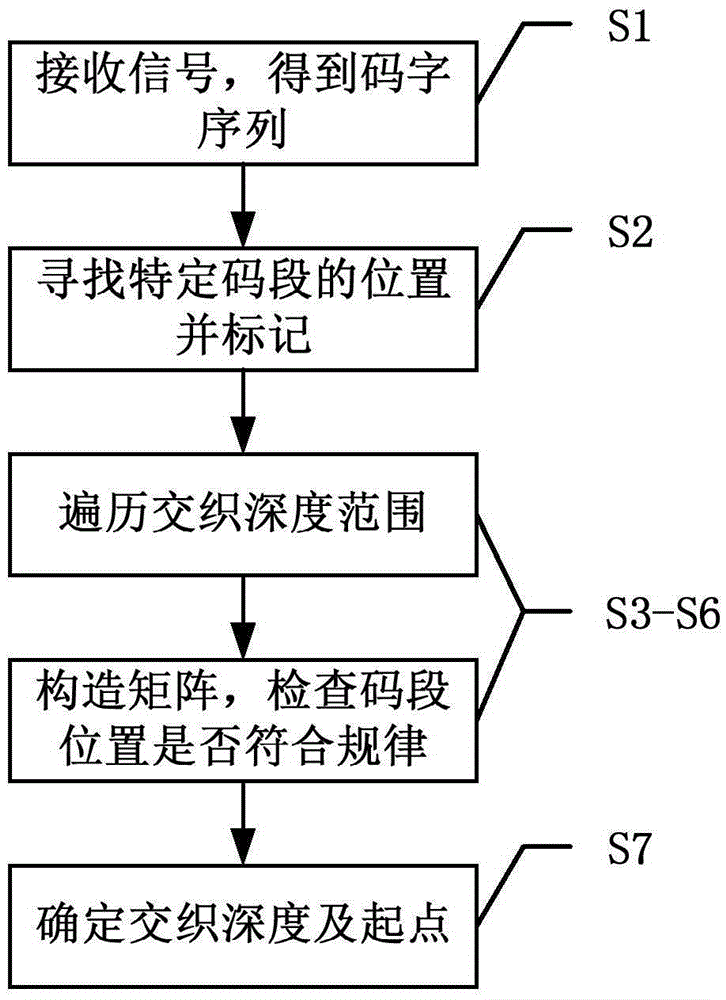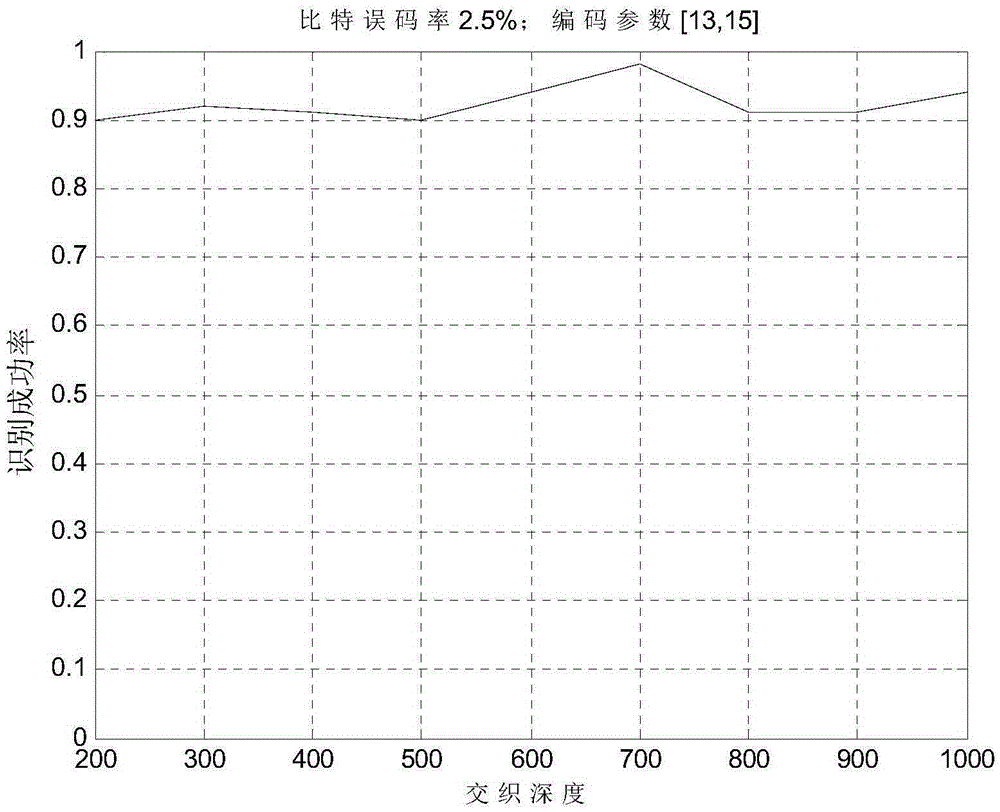Return-to-zero Turbo code starting point and depth blind identification method
A blind recognition and starting point technology, applied in coding, code conversion, coding components, etc., can solve the problem of increasing the computational complexity of the recognition work, and achieve the effect of reducing the computational complexity and improving the computational efficiency.
- Summary
- Abstract
- Description
- Claims
- Application Information
AI Technical Summary
Problems solved by technology
Method used
Image
Examples
Example Embodiment
[0032] Embodiment 1,
[0033] The purpose of this embodiment is to simulate the success rate of parameter blind recognition under the conditions of different interleaving depths and different bit error rates. Take 1 / 3 code rate, PCCC structure, and two-component encoder parameters as [13,15] as an example. Adjust the bit error rate under the condition of interleaving depth 200, record the recognition success rate, and get figure 2 . It can be seen that with the increase of the bit error rate, the recognition success rate gradually decreases, but the method has quite good anti-error performance on the whole. Adjust the interleaving depth under the condition of bit error rate 2.5%, record the recognition success rate, and get image 3 . It can be seen that the interleaving depth has little effect on the recognition success rate, which is the theoretical basis for this method to be suitable for large interleaving depths.
Example Embodiment
[0034] Embodiment 2,
[0035] The purpose of this embodiment is to study the recognition performance of this method under different component encoder parameters. Also taking the PCCC structure with the same code rate of 1 / 3 and the same two-component encoder as an example, 682 generator polynomials between [101,103] and [177,175] were explored. Under the conditions of interleaving depth of 200 and bit error rate of 2.5%, the recognition success rate of each coding polynomial is classified and counted, and the results are as follows Figure 4 .
[0036] It can be seen that the recognition probability of most component encoders is above 85%. In fact, due to the rule that the recognition success rate varies with the bit error rate shown in Example 1, the recognition success rate of most component encoders can achieve very ideal results on the order of 0.1% that is common in practice. In order to highlight that the recognition performance of different component encoders will be...
PUM
 Login to view more
Login to view more Abstract
Description
Claims
Application Information
 Login to view more
Login to view more - R&D Engineer
- R&D Manager
- IP Professional
- Industry Leading Data Capabilities
- Powerful AI technology
- Patent DNA Extraction
Browse by: Latest US Patents, China's latest patents, Technical Efficacy Thesaurus, Application Domain, Technology Topic.
© 2024 PatSnap. All rights reserved.Legal|Privacy policy|Modern Slavery Act Transparency Statement|Sitemap



